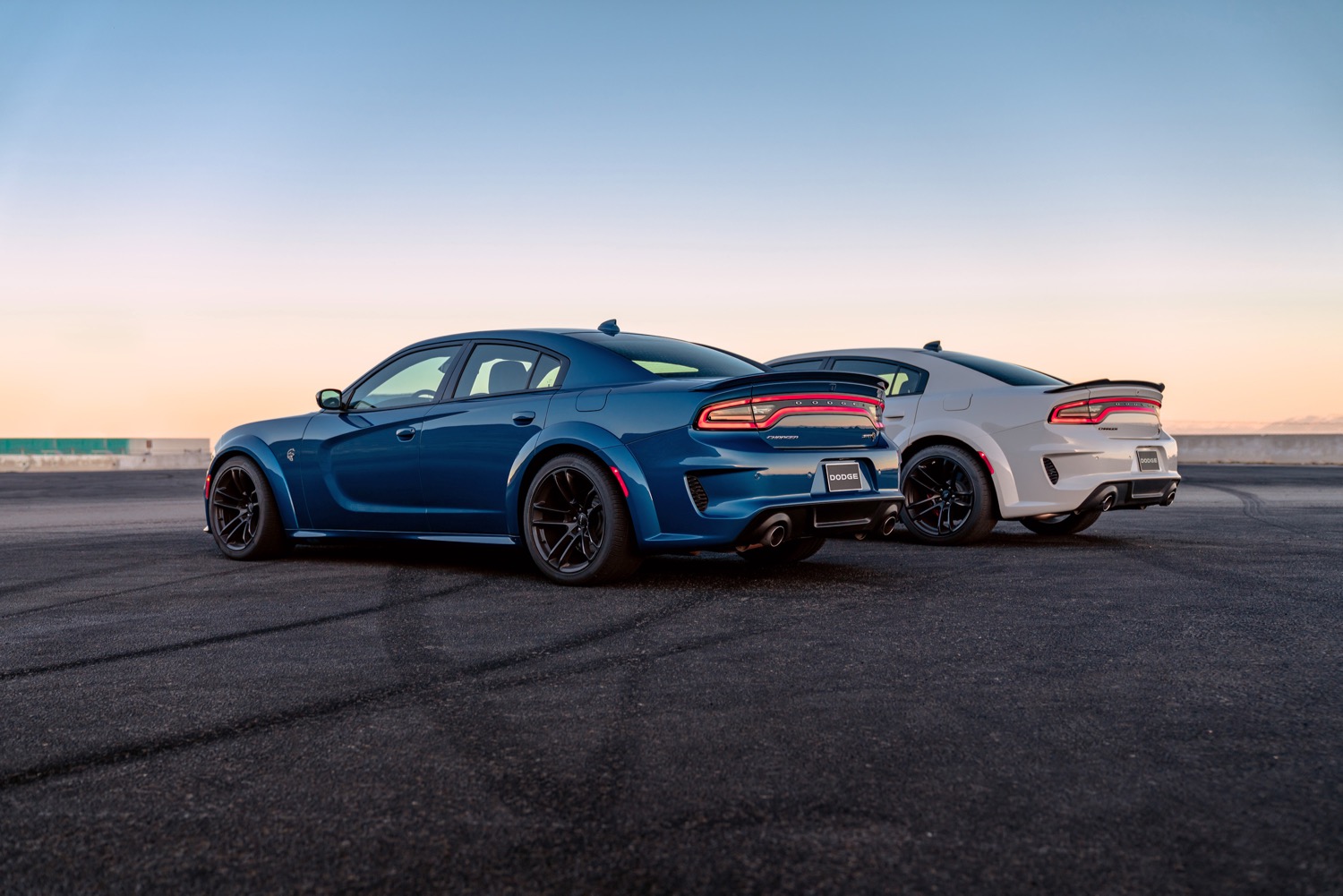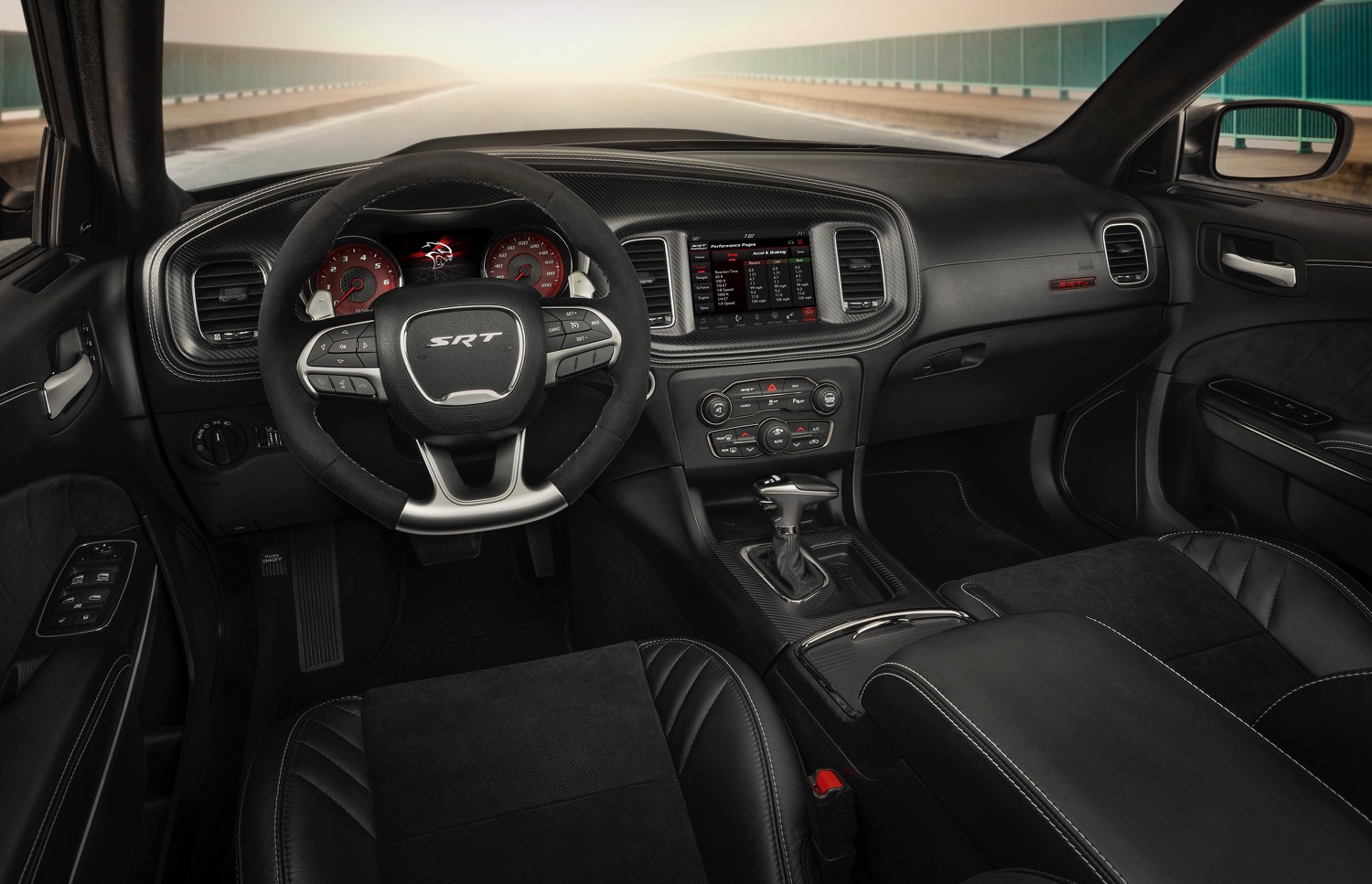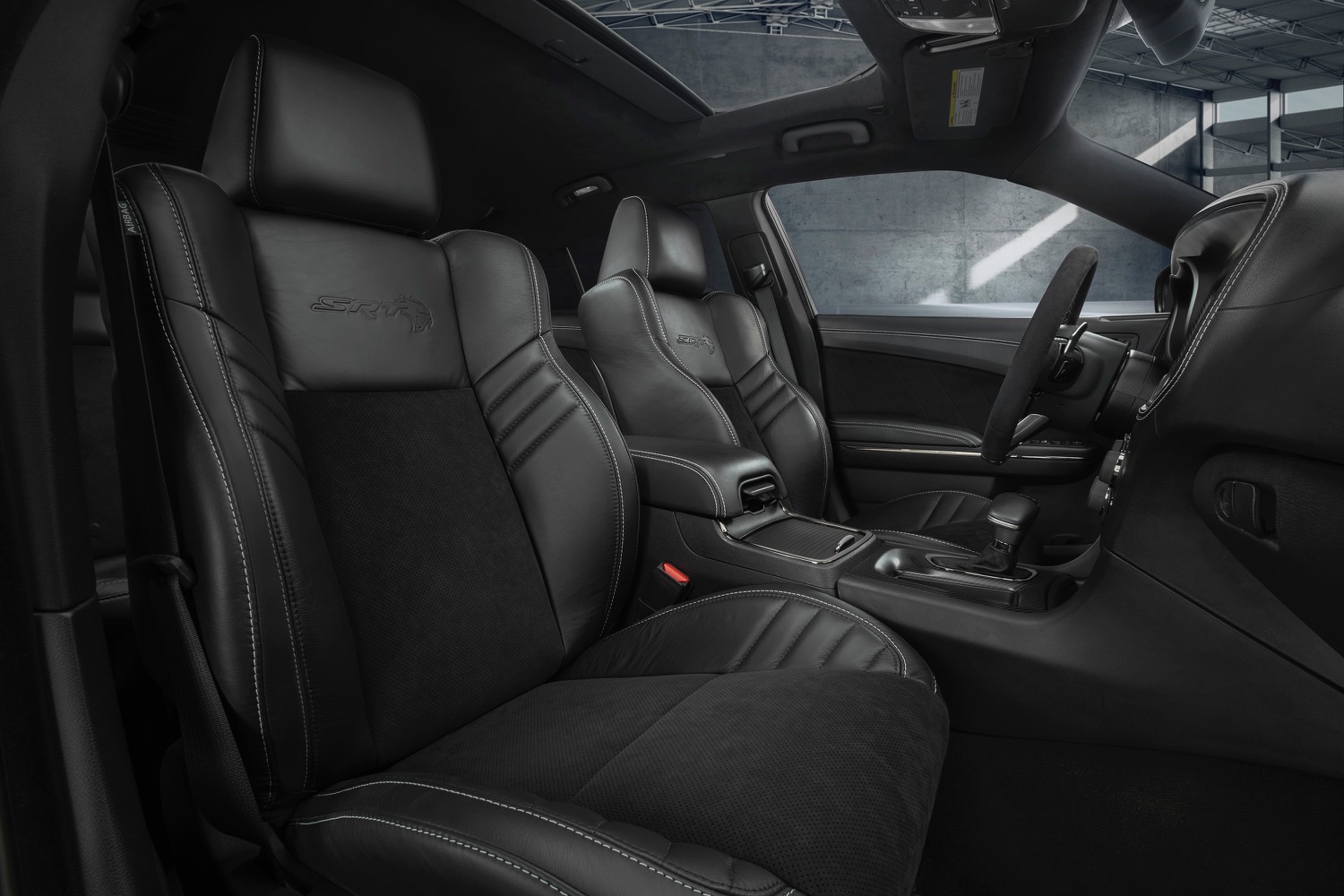Dodge keeps finding new ways to keep its Charger sedan and Challenger coupe alive. The two cars can trace their DNA back to the 1997 Mercedes-Benz E-Class, but Dodge keeps adding more power and features to keep fans of American muscle coming back. Dodge launched a Widebody option for the Challenger for the 2018 model year, and now the Charger is gets the same treatment for 2020.
The 2020 Dodge Charger Widebody is exactly what it sounds like. New front and rear fascias with integrated fender flares add 3.5 inches of width to the big sedan. The extra bodywork shelters Pirelli 305/35ZR20 tires, wrapped around 20-inch wheels. The tires, which are wider than the rubber on other Charger models, add grip, making a noticeable difference in handling, according to Dodge. The package also includes upgraded brakes and model-specific suspension tuning with Bilstein three-mode adaptive damping.
The Charger Widebody will be available in two flavors. The SRT Hellcat uses the ubiquitous 6.2-liter supercharged Hellcat Hemi V8, making 707 horsepower and 650 pound-feet of torque. The Hellcat remains one of the most potent sedans you can buy — at any price. The Widebody version will do zero to 60 mph in 3.6 seconds, run the quarter mile in 10.96 seconds, and has a 196-mph top speed, according to Dodge. It will also pull 0.96 g on the skidpad, allowing it to lap a 2.1-mile road course 2.1 seconds quicker than a standard Charger Hellcat, according to Dodge. The upgraded brakes also shave four feet off the stopping distance from 60 mph, Dodge claims.
If you’ve already racked up too many speeding tickets, Dodge will also offer the Widebody option on the Charger Scat Pack model. The Scat Pack uses a 6.4-liter naturally aspirated Hemi V8, making a slightly saner 485 horsepower and 475 lb-ft of torque. The Scat Pack Widebody will do zero to 60 mph in 4.3 seconds, and run the quarter mile in 12.4 seconds according to Dodge (the automaker doesn’t list a top speed). Its 0.98 g of skidpad grip will allow the Widebody model to lap 1.3 seconds quicker than a standard Scat Pack on Dodge’s hypothetical 2.1-mile road course, and stop three feet shorter from 60 mph.
The 2020 Charger Widebody models also gets new tech features from the defunct Dodge Challenger SRT Demon drag racer. Line lock engages the front brakes, but leaves the rear wheels free to spin for effortless burnouts. Launch control and launch assist work to help the driver put those 707 horses to the ground. The Hellcat-specific race cool-down feature keeps cooling air flowing after the engine is shut down to help avoid overheating. Both Widebody models come standard with an eight-speed automatic transmission and rear-wheel drive.
The 2020 Dodge Charger SRT Hellcat Widebody starts at $71,140, while the Scat Pack Widebody starts at $47,490 (all prices include a mandatory $1,495 destination charge). The latter is a $6,000 premium over a standard Scat Pack, while the Hellcat will only be available in Widebody form for 2020. Dodge is also offering a Daytona 50th Anniversary Edition of the Hellcat inspired by the 1969 Charger Daytona racer. The special edition is priced at $75,635.
The Widebody models are part of a sprawling lineup that also includes 3.6-liter V6 and 5.7-liter Hemi V8 engine options, as well an all-wheel drive option for the V6. You can have a base Charger SXT with the V6 and rear-wheel drive for $31,390. Dodge believes variety is key to the Charger’s appeal. The big four-door continues to defy age and growing SUV sales, remaining a monument to old school American cars.
Updated on September 27, 2019: Added pricing information.












